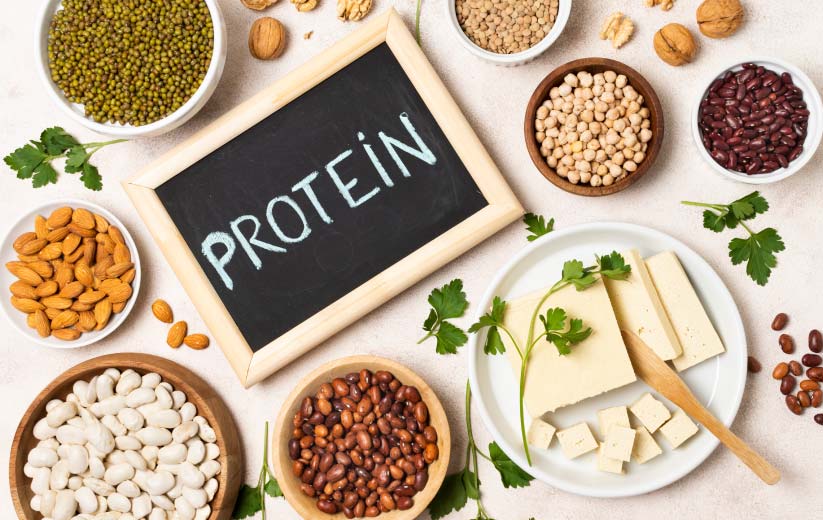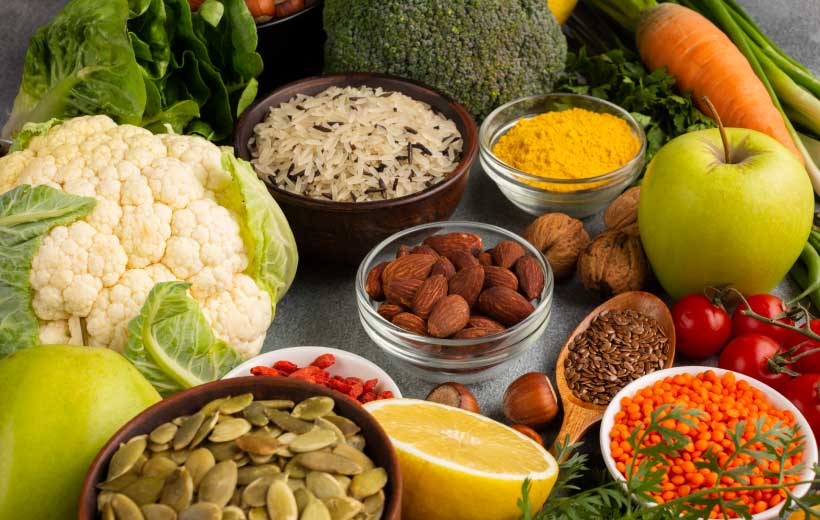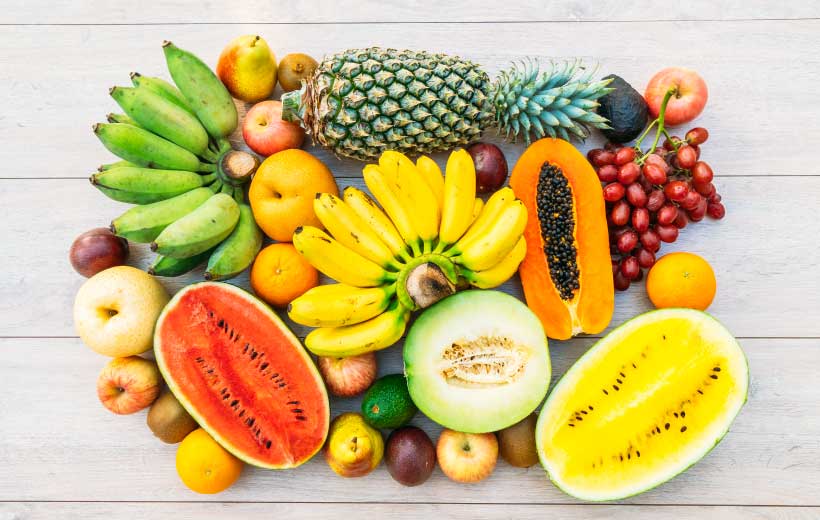There are many concerns about vegetarian diets as well as problems with nutrient deficiencies including protein in the vegetarian diet. However, many experts agree that if a vegetarian diet is well planned, it will provide the body with adequate nutrients through protein-rich vegetarian foods.
Seitan – protein-rich vegetarian food
Seitan is a fake meat made from wheat gluten, and it’s a popular source of protein for many vegetarians. It’s made from gluten, the main protein in wheat, so it’s not like many other imitation types of meat made with soy. It will resemble the shape and texture of the meat when cooked.
Seitan is also known as wheat meat or wheat gluten, 100 grams of seitan contains about 25 grams of protein. This makes it the richest source of plant-based protein on the list of food choices for vegetarians. In addition, Seitan is also a good source of selenium and contains small amounts of iron, calcium, and phosphorus.
Seitan can be preserved by freezing. When cooking seitan can be fried, sautéed, and even watered. Therefore it can be easily incorporated into many recipes. However, seitan should be avoided for people with celiac disease or gluten sensitivity.
Tofu, tempeh, and edamame
Tofu, tempeh, and edamame are all derived from soybeans. Soybeans are considered a rich source of protein. This means that they will provide the body with all the essential amino acids.
Edamame is young tofu with a sweet and grassy flavor that needs to be steamed or boiled before use and can be eaten alone or added to soups and salads. Tofu is made from curdled soybean milk that is pressed together in a process similar to making cheese. Tempeh is made by cooking and lightly fermenting mature soybeans before pressing them into a small mold.
Tofu doesn’t have much flavor but is easily absorbed. Tempeh has a distinctive nutty flavor. Both of these can be used in a wide range of recipes.
All three contain iron and calcium and have about 10-19 grams of protein per 100 grams of edible. Edamame is rich in folate, vitamin K, and fiber. Tempeh contains a good amount of probiotics, B vitamins, and minerals like magnesium and phosphorus.
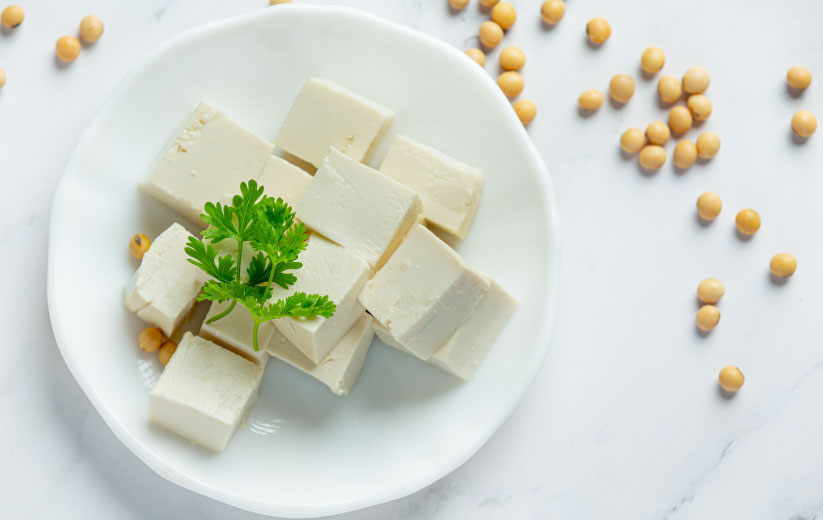
Lentils – a vegetarian food rich in protein
With 18 grams of protein for 240ml of cooked lentils, lentils are a rich source of protein. We can use lentils in many different dishes from fresh salads to soups.
Lentils also contain a good amount of slow-digesting carbs, and with 240 ml of lentils provide about 50% of the recommended daily fiber intake. Furthermore, the type of fiber found in lentils has been shown to feed the good bacteria in the body’s colon, while promoting a healthy gut. Lentils may also help reduce the risk of heart disease, diabetes, excess body weight, and certain types of cancer.
In addition, lentils are also very rich in folate, manganese, and iron. They also contain good amounts of antioxidants and other healthful plant compounds.
Green garbanzo beans and most beans
Chickpeas, also known as garbanzo beans, are a legume with a high protein content. Both beans and chickpeas contain about 15 grams of protein with 240 milliliters of cooked beans. They are also an excellent source of complex carbs, fiber, iron, folate, phosphorus, potassium, manganese, and several beneficial plant compounds.
What’s more, some studies have shown that a diet high in beans can lower cholesterol, help control blood sugar, lower blood pressure, and even reduce belly fat.
Nutritional yeast
Nutritional yeast is a deactivated strain of yeast saccharomyces cerevisiae, sold commercially as a yellow powder. It has a cheese-like flavor, so it’s a common ingredient in dishes like mashed potatoes and stir-fried tofu. Nutritional yeast can also be sprinkled on top of pasta dishes or even enjoyed as a tasty treat on popcorn.
This nutritional yeast’s complete plant protein source provides 14 grams of protein and 7 grams of fiber in 28 grams of edible nutritional yeast. In addition, fortified nutritional yeast is also an excellent source of zinc, magnesium, copper, manganese, and all the B vitamins, including B12.
Durum Wheat and Teff
Durum and Teff are ancient grains. Durum wheat is a type of wheat that contains gluten while Teff is derived from grass, which means it will be gluten-free. Durum wheat and Teff provide 10 – 11 grams of protein in 240ml of cooked solution. Therefore, this is a food with a higher content than other grains.
Both are excellent sources of other nutrients including complex carbs, fiber, iron, magnesium, phosphorus, and manganese. They also contain a good amount of B vitamins, zinc, and selenium.
Durum wheat and teff are versatile alternatives to common grains, such as wheat and rice. Furthermore, it can be used in many recipes, from baked goods to porridge and rice.
Hemp – protein-rich vegetarian food
Hemp comes from the Cannabis sativa plant, which is notorious for being in the same family as the cannabis plant. However, hemp contains only a small amount of THC, the compound that produces the same narcotic effects as marijuana. Although not as prominent as other nuts, 28 grams of hemp contains 10 grams of easily digestible complete protein. This ingredient is 50% more than chia and flax seeds.
Hemp also contains good levels of magnesium, iron, calcium, zinc, and selenium. What’s more, it is a good source of omega-3 and omega-6 fatty acids in a ratio considered optimal for human health.
Several studies have shown that the type of fat found in hemp can help reduce inflammation, as well as relieve symptoms of menopause and certain skin conditions.
Hemp can be added to your diet by sprinkling some in your morning smoothie or breakfast. It can also be used in homemade salad dressings or protein bars.
Green beans – vegetarian food contains a lot of protein
240ml of cooked green beans contains 9 grams of protein. Furthermore, a serving of chickpeas can provide 25% of the daily requirement for fiber, vitamins A, C, and K, thiamine, folate, and manganese.
In addition, green beans are also a good source of iron, magnesium, phosphorus, zinc, copper, and some B vitamins.
Spirulina
Spirulina is a food known as a nutritional powerhouse. 30ml of spirulina provides 8 grams of complete protein. In addition, it meets 22% of the daily requirement for iron, and thiamin and 42% of the need for copper. Furthermore, spirulina also contains trace amounts of magnesium, riboflavin, manganese, potassium, and small amounts of most other nutrients needed by the body, including essential fatty acids.
Plus, there is a natural pigment found in spirulina like phycocyanin, which seems to have powerful antioxidant, anti-inflammatory, and anti-cancer properties.
Several studies on the link between spirulina use and health show various health benefits such as a Stronger immune system and lower blood pressure to improve blood sugar and cholesterol levels.
Amaranth and quinoa seeds
Amaranth and quinoa are often referred to as classic or gluten-free grains, but these two don’t grow from the grass like other grains do. 240 ml of cooked amaranth and quinoa seeds provide 8 – 9 grams of protein and this is a complete protein source, which is rare in grains and pseudocereals.
In addition, amaranth and quinoa are good sources of complex carbs, fiber, iron, manganese, phosphorus, and magnesium.
Soymilk
Soy milk helps to supplement vitamins and minerals. So it can be a great substitute for cow’s milk. In 240ml of soy milk, there are 7 grams of protein, calcium, vitamin D, and vitamin B12.
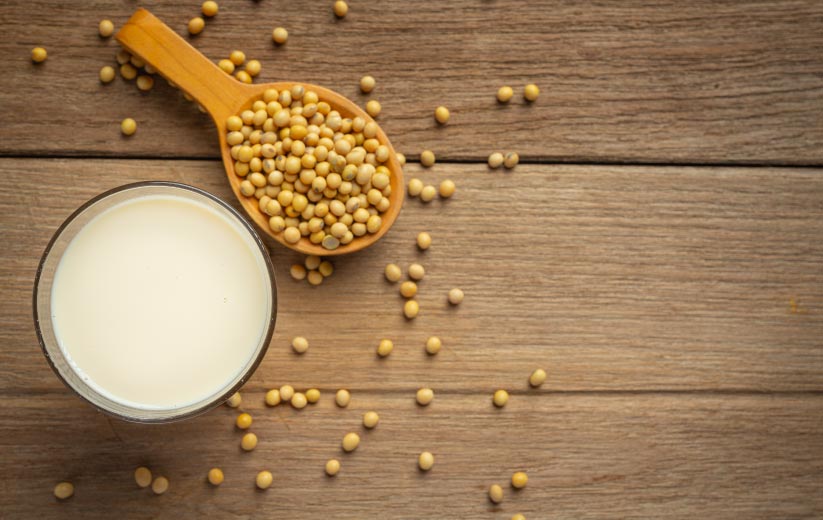
Oats and Oatmeal
Oats are a food that can help add protein to the diet. 120ml of dry oats provides about 6 grams of protein and 4 grams of fiber. In addition, it also provides magnesium, zinc, phosphorus, and folate. Although oats are not considered a complete protein food, they do contain higher-quality protein than common grains like rice and wheat.
Ezekiel bread and bread made from sprouted seeds
Ezekiel bread is made from organic products such as Whole grain sprouts and legumes. These include wheat, millet, barley, and spelling, as well as soybeans and lentils. Two slices of Ezekiel bread contain about 8 grams of protein, more than regular bread.
The seeds and sprouts in the bread will increase the number of healthy nutrients. Studies show that sprouted foods increase amino acid content. For example, in cereals and plant-based foods, the amino acid lysine is lacking, so an application of sprouting increases lysine content while helping to increase overall protein quality. Likewise, combining grains with legumes can further improve the amino acid profile of bread.
Chia seeds
Chia seeds are derived from the Salvia hispanica plant, which is found in Mexico and Guatemala. 35 grams of chia seeds will provide 6 grams of protein and 13 grams of fiber. What’s more, these nuts contain good amounts of iron, calcium, selenium, and magnesium, along with omega-3 fatty acids, antioxidants, and healthful plant compounds.
Nuts, Avocados
Nuts and seeds are great sources of protein. In 28 grams of seeds, there are 5 to 7 grams of protein, depending on the seed variety. In addition, nuts and seeds are also good sources of fiber and healthy fats, along with several minerals and vitamins such as iron, calcium, magnesium, selenium, phosphorus, vitamin E, and several vitamins. group B. At the same time, they also contain beneficial antioxidants.
Protein-rich fruits and vegetables
All fruits and vegetables contain protein, but the amounts are usually small. However, there are still some varieties that contain more protein. Vegetables with the most protein include Broccoli, spinach, asparagus, artichokes, potatoes, sweet potatoes, and Brussels sprouts.
Protein deficiency in vegetarians should be of concern. This list can be used as a guide for anyone looking to incorporate more plant-based protein into their diet.
Nuts and seeds are great sources of protein. In 28 grams of seeds, there are 5 to 7 grams of protein, depending on the seed variety. In addition, nuts and seeds are also good sources of fiber and healthy fats, along with several minerals and vitamins such as iron, calcium, magnesium, selenium, phosphorus, vitamin E, and several vitamins. group B. At the same time, they also contain beneficial antioxidants.

